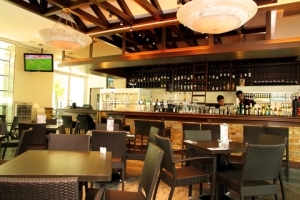 Restaurateurs sometimes wish they had a window into the minds of their patrons. What do customers really want? How can we best serve our patrons while increasing profits? Well now you may just be able to find the answers.
Restaurateurs sometimes wish they had a window into the minds of their patrons. What do customers really want? How can we best serve our patrons while increasing profits? Well now you may just be able to find the answers.
Zagat, a leading guide for restaurants, service professionals and diners alike, has just released their 2012 Restaurant Survey Results after polling 156,000 diners across the country on everything from their favorite restaurants, to the frequency of how often they eat out. What better way to get a look at just what potential customers are buzzing about!
This year’s survey results revealed several interesting points including:
- 81% of surveyors nationwide are in favor of restaurants being required to post their health department letter grades.
- 91% of those surveyed in Las Vegas report that letter grades influence their dining decisions and most will eat only at restaurants that earn a B or better.
- The U.S. tipping average is 19.2%. That number has continued to rise over the past ten years.
- A repeat from last year, the most expensive dining in the nation is in Las Vegas, with an average meal cost of $47.53.
- When dining at a restaurant that does not take reservations, 67% of those nationwide would be willing to wait no more than 30 minutes for a table.
Industry professionals can use the survey results to generate ideas on how cater to their patrons. And remember, responsible beverage service is a necessary component to an excellent dining experience. TAM of Nevada’s knowledgeable instructors can teach your employees how to serve responsibly, and offer real-world insight into providing all-around excellent customer service. You can buy your own copy of Zagat’s 2012 guide here. What did you find most interesting the survey results? What dining trends have you noticed recently in Las Vegas?
Resources
- Zagat 2012 America’s Top Restaurants Survey Reveals 81% of Diners Support Posting Health Letter Grades – PR Newswire
- America’s Top Restaurants 2012 – Zagat
© 2011 National Hospitality Institute®, TAM® of Nevada


 People have been mixing drinks to suit their tastes for centuries. In fact, many of the most popular and well known drinks requested by bar patrons today were first created by bartenders decades ago. Ever wonder about the history behind these classic cocktails? Being able to explain the origin of a mixed drink makes for great conversation with your patrons. The origin of many popular cocktails remains elusive, often with multiple sources claiming credit. Others can be traced back to a particular mixologist or bar. While several cocktails have more stories about their origins than ingredients in the actual drink, here are a few we can help pinpoint for you:
People have been mixing drinks to suit their tastes for centuries. In fact, many of the most popular and well known drinks requested by bar patrons today were first created by bartenders decades ago. Ever wonder about the history behind these classic cocktails? Being able to explain the origin of a mixed drink makes for great conversation with your patrons. The origin of many popular cocktails remains elusive, often with multiple sources claiming credit. Others can be traced back to a particular mixologist or bar. While several cocktails have more stories about their origins than ingredients in the actual drink, here are a few we can help pinpoint for you: Ask any seasoned security professional, and they’ll tell you they’ve seen some patrons behaving very badly at some point in their career. Donna Hood Crecca for Nightclub & Bar highlights this fact in her article, “
Ask any seasoned security professional, and they’ll tell you they’ve seen some patrons behaving very badly at some point in their career. Donna Hood Crecca for Nightclub & Bar highlights this fact in her article, “